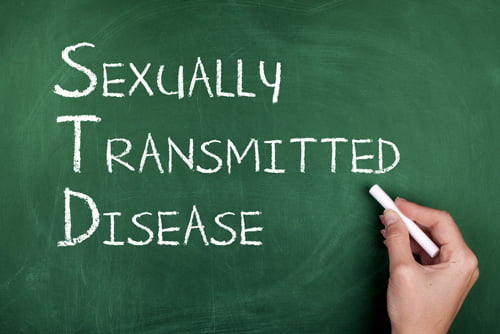
What’s the Risk?
When considering the potential impact of STDs, we should remember the words of former U.S. Surgeon General C. Everett Koop: “When you have sex with someone, you are having sex with everyone they have had sex with for the last ten years, and everyone they and their partners have had sex with for the last ten years.” Let that soak in and marinate for a minute.
More than 25 diseases are primarily spread through sexual activity, and anyone who is sexually active risks some degree of exposure to a sexually transmitted disease or infection. With a whopping 65 million Americans currently living with an incurable sexually transmitted disease, I’d say the chances aren’t in ones favor if engaging in sex, protected or not, outside of a monogamous relationship.
Other factors increase your risk as well, such as the number of sexual partners, drug use where needles are being shared, engaging in one-night stands, and the types of sexual acts being performed are a few other “risk increasers”. While new STDs continue to develop each year, the most common ones among Americans are HPV, chlamydia, herpes, gonorrhea, and syphilis. HPV, HIV, herpes, and hepatitis are incurable. If left untreated, STDs and STIs can both lead to serious health issues down the road.
Is One Worse Than the Other?
We’re talking about STDs and STIs. Have you ever wondered what’s the difference between the two? Surprisingly not much, but here’s how to differentiate them: Sexually Transmitted Infections occur when people become infected, with the infection usually going about symptomless and unrecognizable. That’s where the more modern term “STI” comes from. Sexually Transmitted Diseases occur when an STI progresses in the body and results in a disease over time. But to be clear, not all infections will lead to a disease.
Still confused? Take the herpes virus for instance: If a person contracts the herpes virus but has not displayed symptoms or had an outbreak, it’s considered an STI. Once the infection begins to develop into outbreaks, it would be considered a disease. The same is true for individuals who have chlamydia or gonorrhea infections that develop into pelvic inflammatory disease. So, the long and short of it is this: STD and STI both essentially stand for the same thing. The distinction is that an STI doesn’t always mean you have an STD. This is what makes getting tested on a regular basis, even periodically, is so important!
5 “Facts” About STDs That Aren’t True
“Fact” 1 – You Can’t Get an STD From Oral Sex
False; you’re still at risk. Herpes, HPV, hepatitis, chlamydia, gonorrhea and syphilis can all easily be spread from one partner to another during oral sex because it’s passed through skin to skin contact. Syphilis in the most common STD spread orally.
“Fact” 2 – I’ve Only Had Sex With One Person, So There’s No Way I Can Have an STD
Maybe this is the first partner you’re engaging with sexually, but you may not know their sexual history. Therefore, not only talking honestly about your sexual past is important for both parties, but also why abstaining from vaginal, anal, and oral sex until you’re in a long-term monogamous relationship is even more important.
“Fact” 3 – You Can’t Get an STD if You Use a Condom
Yes, condoms can reduce risk, but they should not be trusted 100%. There are areas of the skin that aren’t covered by a condom and the skin to skin contact could still put you at risk of genital warts, herpes, and HPV. And to clear the air, two condoms aren’t better than one. That method won’t add any further protection.
“Fact” 4 – Once You’ve Been Treated, You’re Immune To the Disease
For most diseases, once you’ve been treated, that’s the end of it and your body has an immunity to the disease. Unfortunately, STDs and STIs don’t work that way. Although you’ve been treated, you can still get the infection again. You can contract the same infection once, or one-hundred times more.
“Fact” 5 – You Can Contract an STD From a Toilet Seat
3 words: It’s extremely unlikely. These viruses or bacteria love to live inside the human body, and it’s unlikely that these viruses would stay alive outside your body for very long. As the name says, sexually transmitted disease are mostly transmitted through a sexual route that is oral, vaginal, and anal only.
STD Quiz
Have you had multiple sexual partners?
☐ Yes ☐ No
Have you been diagnosed with an STD such as Chlamydia or Gonorrhea in the last 2 years?
☐ Yes ☐ No
Have you had vaginal sex in the past 12 months?
☐ Yes ☐ No
Have you had oral sex in the past 12 months?
☐ Yes ☐ No
Have you had anal sex in the past 12 months?
☐Yes ☐ No
If yes to question 3, 4, or 5, has it been more than 12 months since you were tested for an STD?
☐ Yes ☐ No
Have you exchanged bodily fluids: semen, vaginal fluids, blood or have you touched your sex organs after touching your partner’s sex organs?
☐ Yes ☐ No
If you answered yes to one or more of the questions, you are at risk for having an STD and we recommend that you schedule an appointment with your health care provider for testing as soon as possible.

